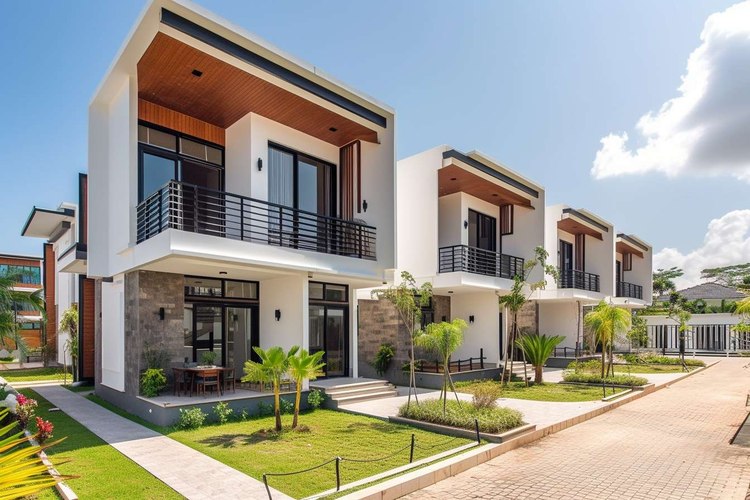Decoding Home Worth: Complete Guide to Property Value
Understanding what a home is truly worth involves far more than a listed price. This guide breaks down how market trends, property features, renovations, and professional valuations influence home value. Learn practical strategies to estimate, preserve, and increase property value using appraisal methods, cost-effective upgrades, and maintenance tips. Ideal for buyers, sellers, and homeowners seeking smarter real estate decisions.

Reading Market Cycles and Timing
Home values are shaped heavily by broader market forces. Economic growth, interest rates, and the balance between housing supply and buyer demand all drive price movement. In a seller’s market—where inventory is scarce and demand is high—prices generally rise more quickly. In contrast, a buyer’s market, characterized by an abundance of listings and fewer buyers, can slow appreciation or even push values down. Recognizing these cycles and local indicators (such as days on market, inventory levels, and mortgage rate trends) helps you choose when to buy, sell, or hold.
How Property Attributes Affect Value
The physical and functional characteristics of a house directly affect its worth. Key elements include total square footage, bedroom and bathroom counts, lot dimensions, and the architectural style. Features that meet current buyer preferences—open floor plans, natural light, modern kitchens—tend to increase appeal. Energy-efficient upgrades, smart-home systems, and durable materials can also enhance resale value. Conversely, deferred maintenance, outdated systems, or awkward layouts will usually reduce attractiveness and lower offers.
Renovations That Deliver the Best Returns
Not every renovation generates equal value. Kitchen and bathroom remodels often provide the strongest return on investment because they influence buyer perception and daily usability. Other upgrades that commonly pay off include installing energy-efficient windows, updating HVAC systems, and creating usable outdoor living spaces like decks or patios. Before committing to a project, weigh the cost versus expected increase in value and consider neighborhood norms—over-improving beyond local standards can limit your return.
Professional Valuation Techniques
Several established methods are used to estimate a home’s market worth:
- Comparative Market Analysis (CMA): Real estate agents compare recently sold, similar properties in the area to derive an estimated value. CMAs are practical and reflect current market conditions.
- Professional Appraisal: Licensed appraisers evaluate the property using comparable sales, condition, and replacement cost approaches to produce a formal, lender-accepted report.
- Cost Approach: This method calculates what it would cost to rebuild the property from scratch, adjusting for depreciation—useful for unique or new constructions.
- Income Approach: Applied mainly to rental or investment properties, this approach values a home based on the income it generates.
Each method has strengths and is best suited for different situations—buyers, lenders, and investors should choose appropriately.
| Valuation Method | Provider | Typical Cost Range |
|---|---|---|
| Professional Appraisal | Licensed Appraiser | $300-$600 |
| Comparative Market Analysis | Real Estate Agent | Free-$100 |
| Online Valuation Tool | Zillow/Redfin | Free |
| Broker Price Opinion | Licensed Broker | $100-$300 |
Prices, rates, or cost estimates mentioned in this article are based on the latest available information but may change over time. Independent research is advised before making financial decisions.
Estimating Current Market Value
Homeowners and prospective buyers can use a combination of tools to estimate value. Start with free online valuation tools to get a ballpark figure, then consult a real estate agent for a CMA to understand comparable local sales. For lending or legal matters, a licensed appraisal provides the most authoritative valuation. Broker price opinions are a lower-cost alternative when a full appraisal isn’t required.
Long-Term Appreciation Drivers
Historically, residential real estate tends to appreciate over time, but rates vary widely by region and timeframe. National averages often fall in the 3–5% annual range, yet local factors—population growth, employment opportunities, transportation and infrastructure projects, and zoning changes—can accelerate or decelerate appreciation. When evaluating potential long-term gains, examine local economic forecasts and planned developments that could raise demand.
Protecting Value Through Maintenance
Keeping a property in good condition is one of the simplest ways to preserve and enhance its value. Regular upkeep—such as servicing HVAC systems, inspecting and repairing roofs, addressing plumbing and electrical issues, and refreshing exterior paint—prevents minor problems from becoming costly defects. Seasonal maintenance and prompt repairs maintain curb appeal and structural integrity, both of which are important to buyers and appraisers.
Making Smart Decisions About Improvements
When planning upgrades, prioritize projects that align with buyer expectations in your neighborhood and offer strong cost-to-value ratios. Avoid extravagant renovations that exceed area norms. Consider energy-efficiency improvements and practical upgrades that reduce operating costs—these can make a property more attractive and justify higher asking prices.
Final Thoughts on Home Value
A home’s value is not static; it evolves with market trends, property condition, and local developments. By understanding market cycles, assessing a property’s attributes, choosing the right improvements, and employing reliable valuation methods, homeowners and buyers can make informed decisions. Consistent maintenance and strategic upgrades typically lead to better long-term appreciation and more successful real estate outcomes.






